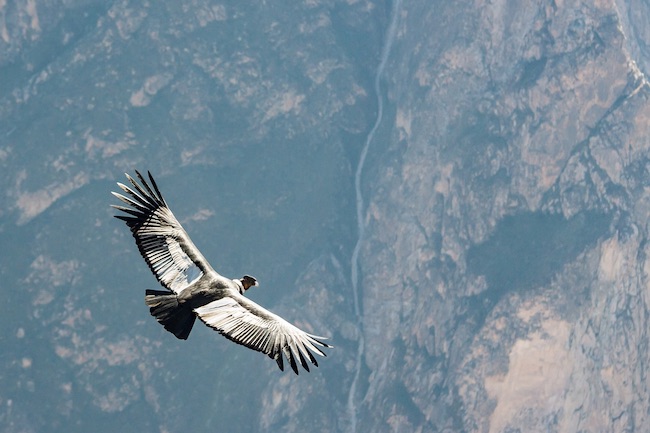
Photo Credit: https://pixabay.com/photos/condor-peru-andean-condor-bird-4410243/
Description |
The incredible Andean Condor is the largest flying bird in the Western Hemisphere. The adult is mostly black with large white wing stripes and streaks that descend from the middle of the wing. There are white "ruffs" on either side of the neck and the small head is featherless and pinkish in color. The color of the head can vary based on its emotional state. The male has a pinkish "wattle", or fold of skin that extends from the base of the bill to the next and a large protrusion of skin on top of the head that extends near the tip of the bill. An adult Andean Condor can weigh up to 33 pounds and has a wingspan of up to ten feet in length! The Andean Condor is the national bird of five South American countries. |
Diet |
| Like most vultures and condors, the Andean Condor eats the carrion. Because of their huge size, they prefer larger carcasses such as deer and sheep, and are often the first birds to be able to tear into a carcass. They often go days without eating before gorging themselves on several pounds of carrion. Sometimes, they eat so much that they cannot move or fly. |
Habitat |
| The Andean Condor is generally found high in the mountains, from 10,000 to 16,000 feet. |
Range |
| The Andean Condor is found throughout much of the Andes Mountain Range in western South America. |
Reproduction |
| Andean Condors reach reproductive maturity at age five or six. The female lays one or two eggs on a cliff ledge or in a mountain cave every other year. The flimsy nest is comprised of a few sticks. Both parents and hatch incubate the eggs in about two months. Both parents regurgitate food to feed to the young. The young are able to fly after six months, but remain with their parents for two years. |